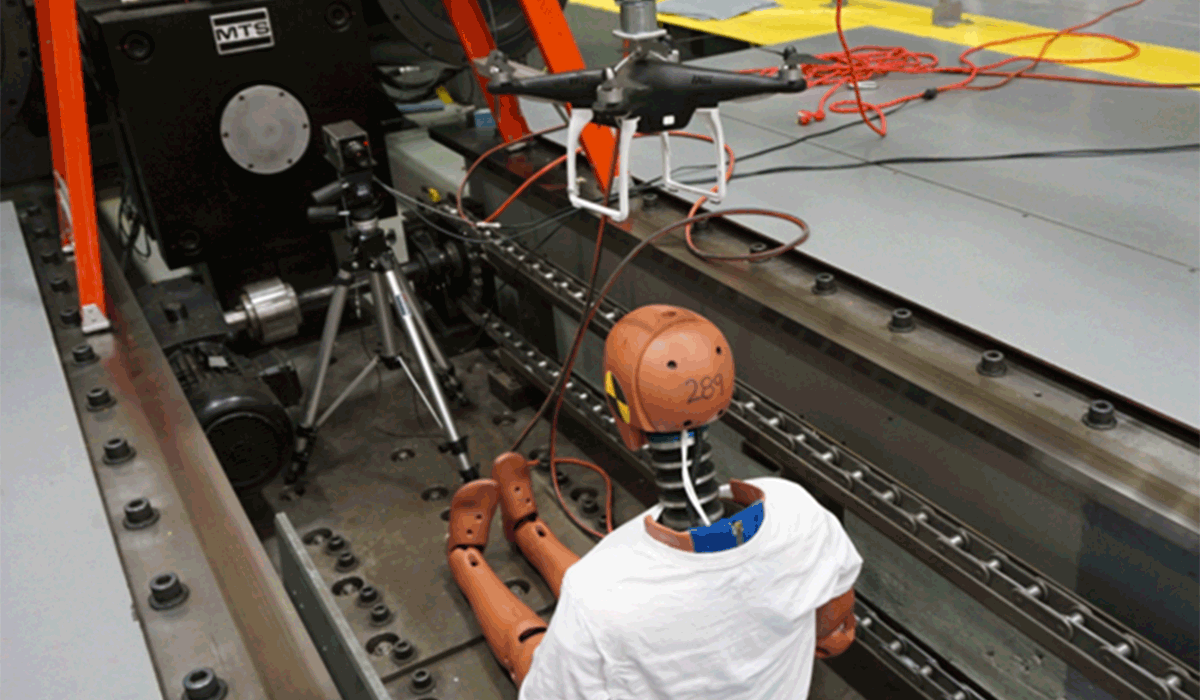
An FAA study revealed that people on the ground are susceptible to three dominant kinds of injuries should they be unfortunate enough to be struck by a drone. UAS
An FAA study released last week concluded that people on the ground are susceptible to three dominant kinds of injuries should they be unfortunate enough to meet up with a drone, especially a unit’s unprotected propellers. Those risks include blunt force trauma, the most significant contributor to fatalities, lacerations and penetration injuries.
When queried about the actual risk of people being struck by a drone, however, the agency’s answers were not as definitive, explaining only that this most recent research represented the beginning to better understanding the risks of allowing drones to overfly people.
Research showed multi-rotor drones fall more slowly than the same mass of metal due to higher drag on the drone. Unlike most drones, wood and metal debris do not deform and transfer most of their energy to whatever they hit. The results also showed that the lithium batteries powering many drones demand a unique (as yet undetermined) standard to ensure safety.
The consortium of researchers that began studying drones and people in September 2015 included the University of Alabama-Huntsville; Embry-Riddle Aeronautical University; Mississippi State University; and the University of Kansas, through the Alliance for System Safety of UAS through Research Excellence (ASSURE). ASSURE represents 23 of the world's leading research institutions and 100 leading industry and government partners.
The research team reviewed more than 300 publications from the automotive industry and consumer battery market, as well as toy standards and the Association for Unmanned Vehicle Systems International (AUVSI) database. The research concluded with the team conducting crash tests, dynamic modeling, and analyses related to kinetic energy, energy transfer, and crash dynamics. More research into the drone/people connection is set to begin next month.

Sign-up for newsletters & special offers!
Get the latest FLYING stories & special offers delivered directly to your inbox






